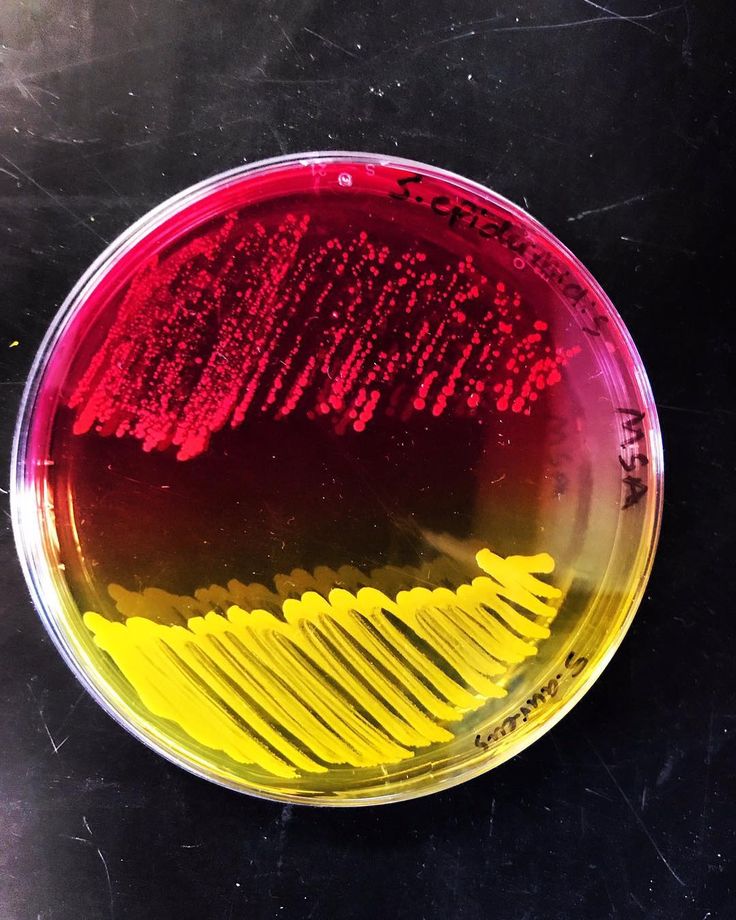Table of Contents
ToggleMannitol Salt Agar in microbiology, sometimes known as MSA, is a frequently used selective and differential growth media. While preventing the growth of other bacteria, it promotes the growth of a certain group of bacteria. It has a high concentration of salt (NaCl) that is inhibitory to most bacteria (7.5–10 %), making MSA selective against most Gram-negative bacteria and selective for some Gram-positive bacteria (Staphylococcus, Enterococcus, and Micrococcaceae) that can withstand high salt concentrations.
Definition Mannitol Salt Agar
Mannitol Salt Agar is used for the isolation of pathogenic Staphylococci, and utilized as a selective media. The use of it is advised for the identification and counting of coagulase-positive Staphylococci in milk, food, and other samples. Utilizing it for conducting microbiological limit testing is advised by U.S.P.
Principle of MSA
Bacteria other than staphylococci are partially or completely inhibited by the sodium chloride concentration of 7.5% in the medium. Mannitol is a carbohydrate source that can be fermented, and this fermentation results in the generation of acid. The MSA will favor organisms like Staphylococcus species that can survive in environments with a lot of salt (plate on the left in the illustration below). Streptococcus species, however, have their growth inhibited by the high salt content of the agar.

Recipe of mannitol salt agar
| S.N | Compound | Amount (gm) |
| 1 | beef extract | 1.0 |
| 2 | peptone | 10 |
| 3 | NaCl | 75 |
| 4 | mannitol | 10 |
| 5 | phenol red | 0.025 |
| 6 | agar | 15 |
| 7 | distilled water | 1,000 mL |
Protocol of MSA
The protocol is discussed below:
- To obtain isolated colonies, the quadrant streak plate is used to streak a plate of mannitol salt agar with the appropriate culture. The best outcomes in the biochemical differentiation of bacteria employing MSA will come from well-isolated colonies.
Expected results
- When mannitol is fermented by Gram + Staphylococcus, the medium turns yellow (e.g., S. aureus).
- Gram + Staphylococcus: not fermenting mannitol, medium does not change color, as in the case of S. epidermidis.
- Gram + Streptococcus: growth inhibition
- Gram – : growth inhibition
Uses of Mannitol salt agar
A selective media for the isolation of pathogenic Staphylococci is mannitol salt agar. For the purpose of finding and counting coagulase-positive Staphylococci in milk, food, and other samples. The U.S.P. advises against using it while conducting microbiological limit tests.
Differences between MacConkey agar and MSA
For instance, only Gram-negative bacteria can be grown in MacConkey’s (MAC) selective bacterial growth medium. Only halophilic (salt-loving) bacteria like Staphylococcus and Micrococcus may be grown in mannitol salt medium (MSA).
Why MSA agar is selective medium agar?
Since mannitol salts agar has a high salt content, it is selective and will only support the growth of halophilic (salt-loving species) or halotolerant (salt-tolerant) species. Compared to conventional media, which only include 0.5% salt, this medium has 7.5% salt.
FAQs/MCQs
What is the full form of MSA agar?
Mannitol Salt Agar
What type of media is MSA agar?
MSA agar is a selective type of media.
Why is mannitol agar is used in wound culture?
The use of mannitol salt agar (MSA), which was developed in 1945 to acquire presumed identification of pathogenic staphylococci from clinical samples, depends on S. aureus‘s capacity to ferment mannitol and develop into colonies that are yellow-pigmented.
References
https://asm.org/Protocols/Mannitol-Salt-Agar-Plates-Protocols






